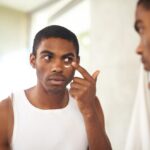Ringworm of the Scalp (Tinea Capitis)
What is ringworm of the scalp?
Ringworm of the head also referred to as tinea capitis, is a very common condition in children generally occurring between the ages of 3 and 7 years. Tinea capitis is an infection caused by fungus. Millions of people are carriers of the fungus that causes tinea capitis but do not show symptoms. Infection is usually transferred from human to human or from animal (pets) to human. This transfer can occur anywhere but for children, it often occurs at daycare and at school. This infection does not pose a significant health risk to the child, but hair loss can occur and treatment can improve the child’s self-esteem, especially if the infection and resulting hair loss are extensive.
Symptoms
The appearance of tinea capitis may vary and depends upon the amount of inflammation involved. There may be one or several scaly (flaky) circular patches. Alternatively, the scales may be widespread, similar to dandruff. Some infected areas may have broken hairs giving the appearance of small black dots. In some cases, crusted yellow patches accumulate around a hair shaft. This patch can thicken producing a cheese or mouse-like odor. Tinea capitis can also cause localized boggy swelling and pus-filled bump formation which can be accompanied by enlarged neck lymph nodes and fever. The pus-filled bumps can also spread throughout the scalp.
How it’s diagnosed
Diagnosis of tinea capitis may require a scraping of the scales from the scalp or removing infected hairs as a sample to send to the lab to determine the presence of fungi. Your doctor may use a special light, wood lamp, to illuminate your scalp and determine signs of infection.
Treatment
Without treatment, tinea capitis can spread to other body locations or lead to permanent hair loss. Your doctor will probably prescribe fungi-killing oral medication and medicated shampoo. The medicated shampoo helps prevent the fungus from spreading, but it does not kill the ringworm. You must combine this type of treatment with oral medication. For children, there is only one approved drug for treatment in the United States, griseofulvin by mouth. This medication works best when taken with fatty foods such as peanut butter or ice cream. Typically, the child has to take the medication for 6 to 8 weeks. The medication has possible side effects, including diarrhea and an upset stomach. Another possible side effect is sun sensitivity which may cause skin rashes or burns during long exposure to sunlight.
Preventing reinfection
Re-infection can be avoided by throwing away all combs, brushes, hair ornaments, hats,s and helmets once treatment has been started. Children should be taught never to share combs, brushes, hats, etc.
The psychological impact on children from this disease can be extensive due to the scaling and hair loss. Rejection from family members and mockery by classmates can be devastating. Therefore, early diagnosis and treatment should be sought as it can be a great comfort to these children.
References
1. Chen BK, Friedlander SF. Tinea capitis update: a continuing conflict with an old adversary. Curr Opin Pediatr. 2001 Aug;13(4):331-5.
2. Mohrenschlager M, Seidl HP, Ring J, Abeck D. Pediatric tinea capitis: recognition and management. Am J Clin Dermatol. 2005;6(4):203-13.



